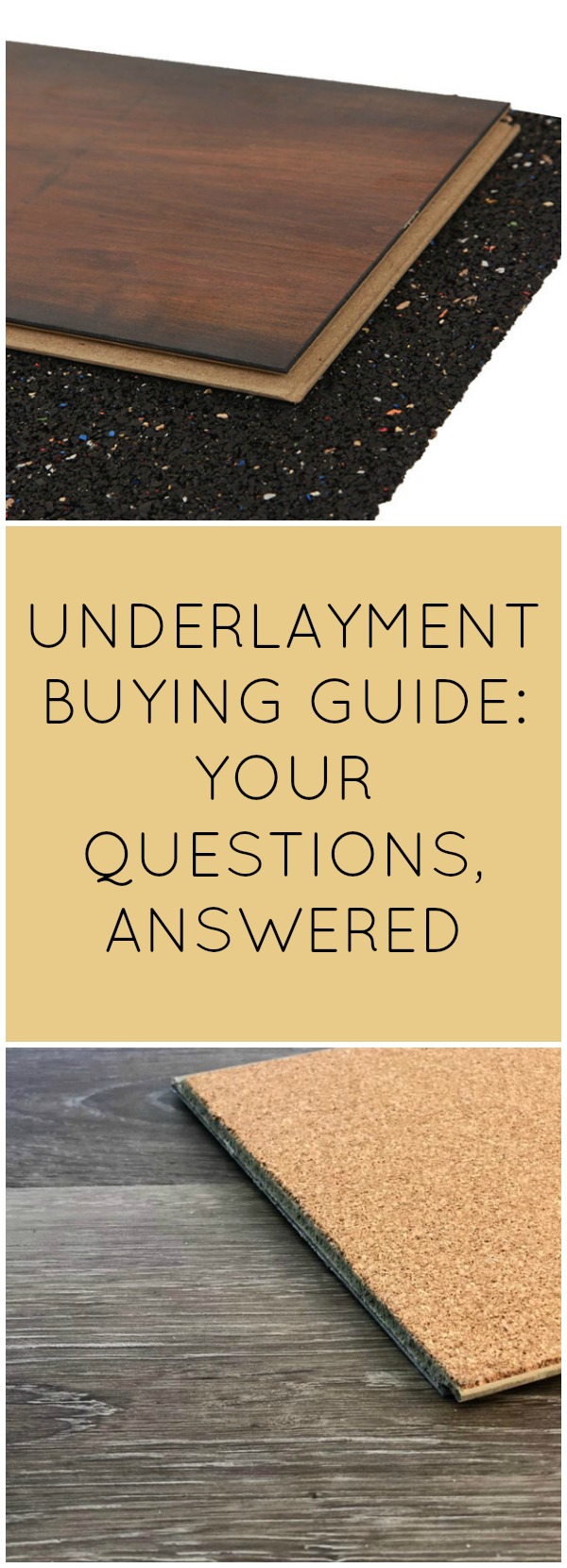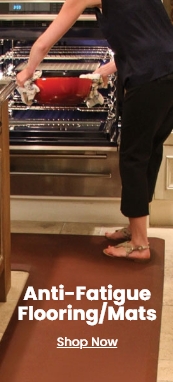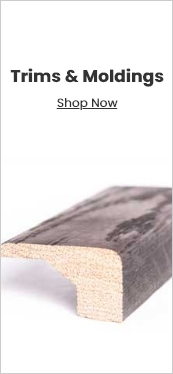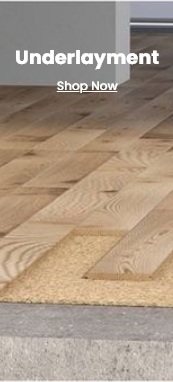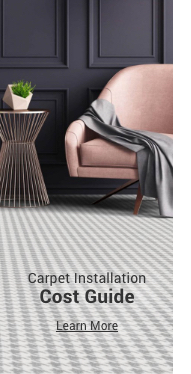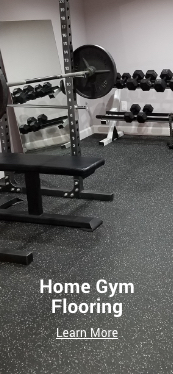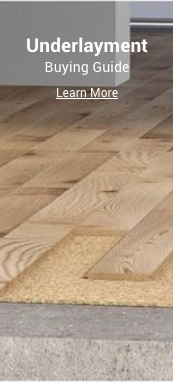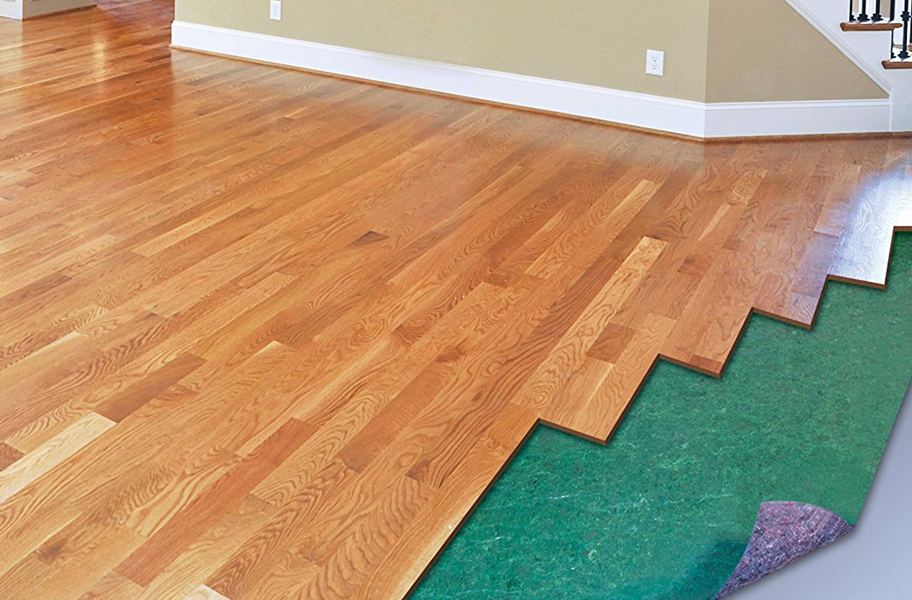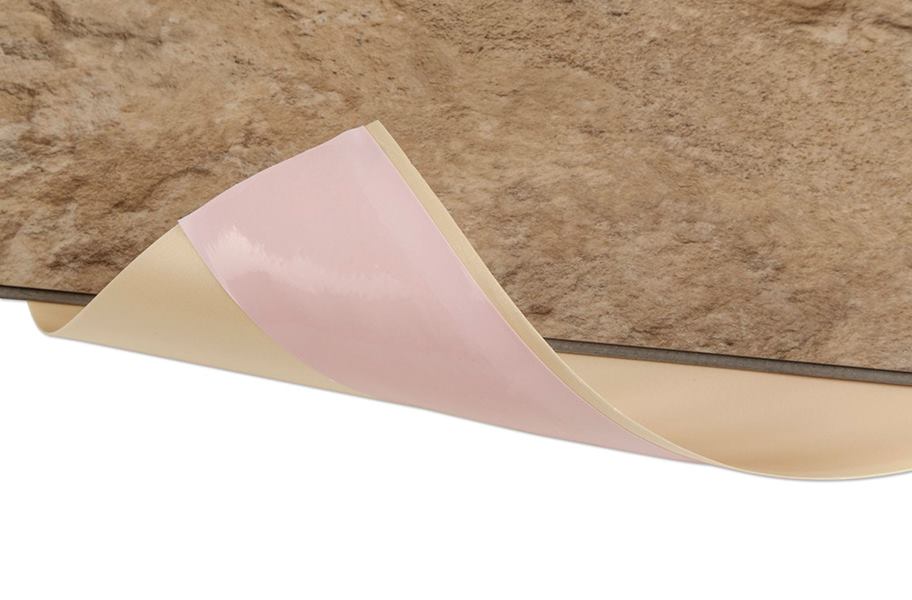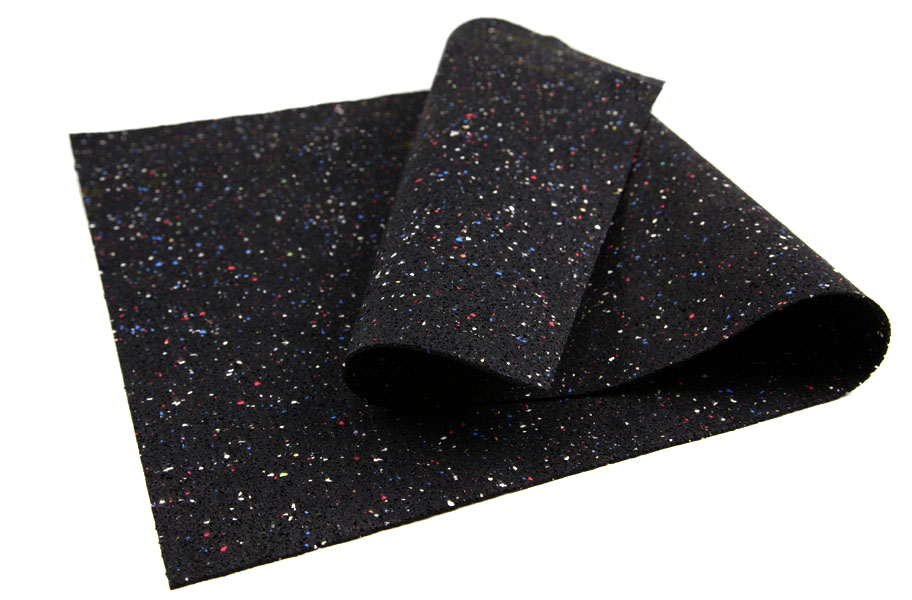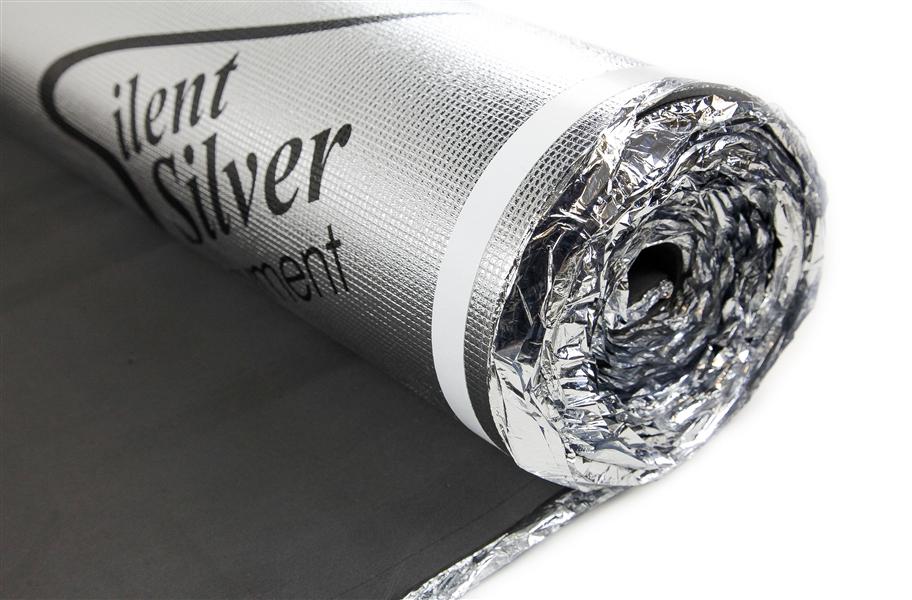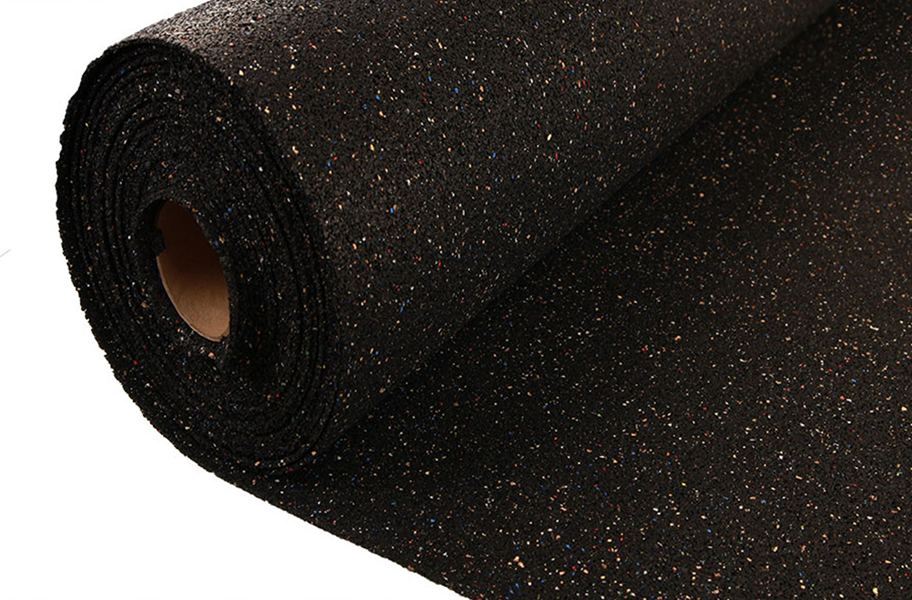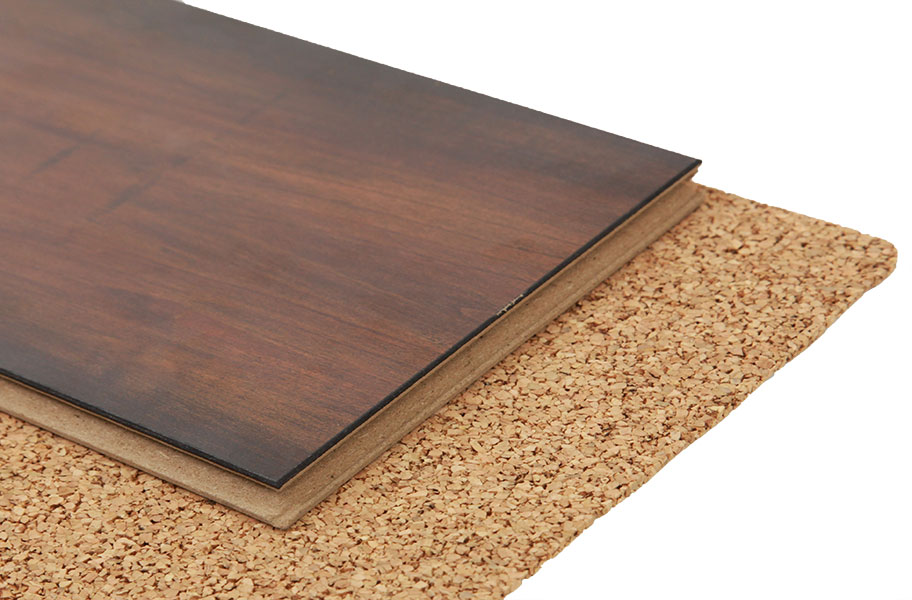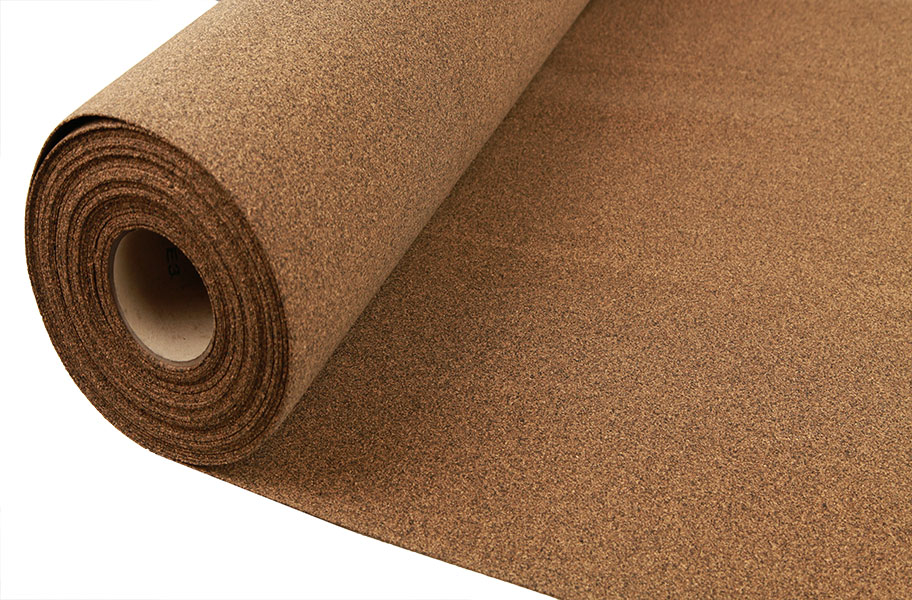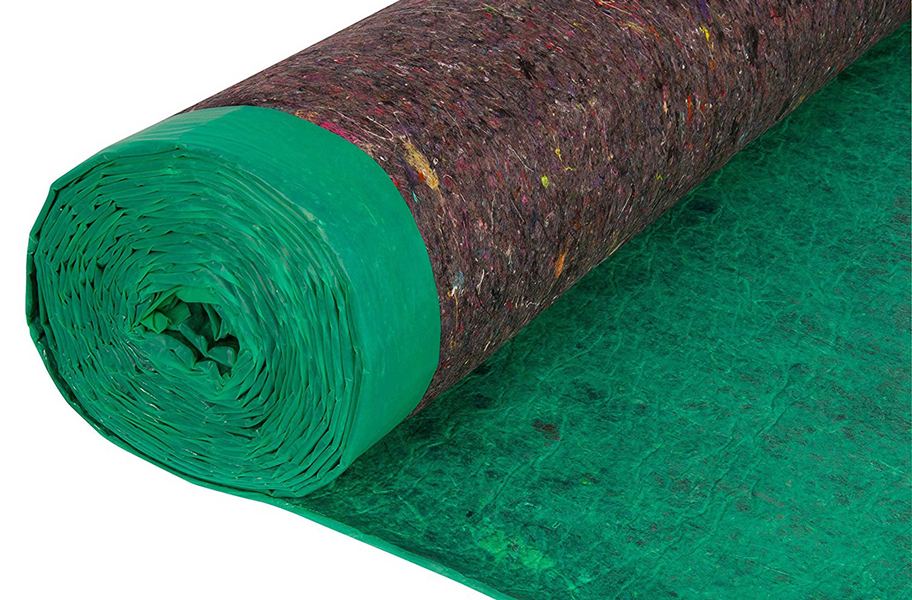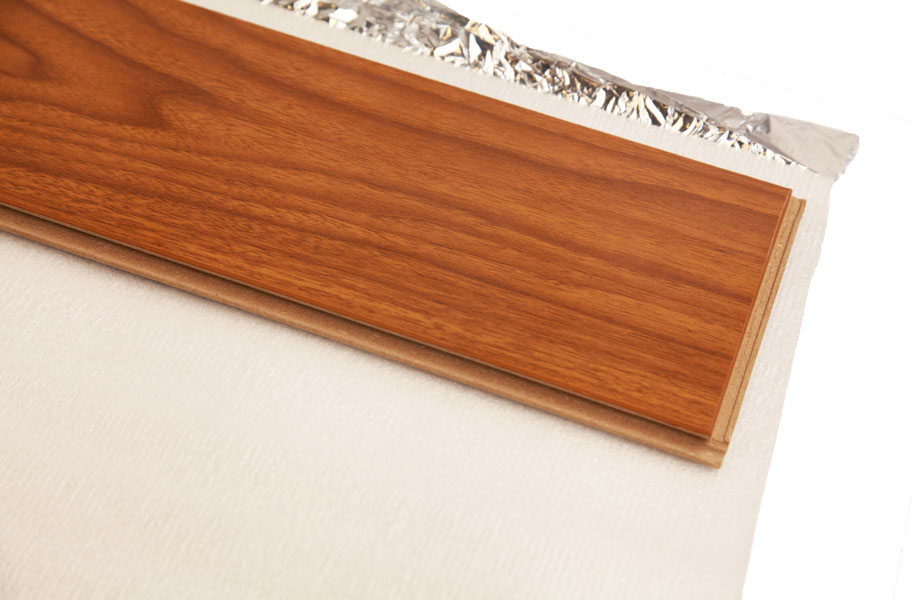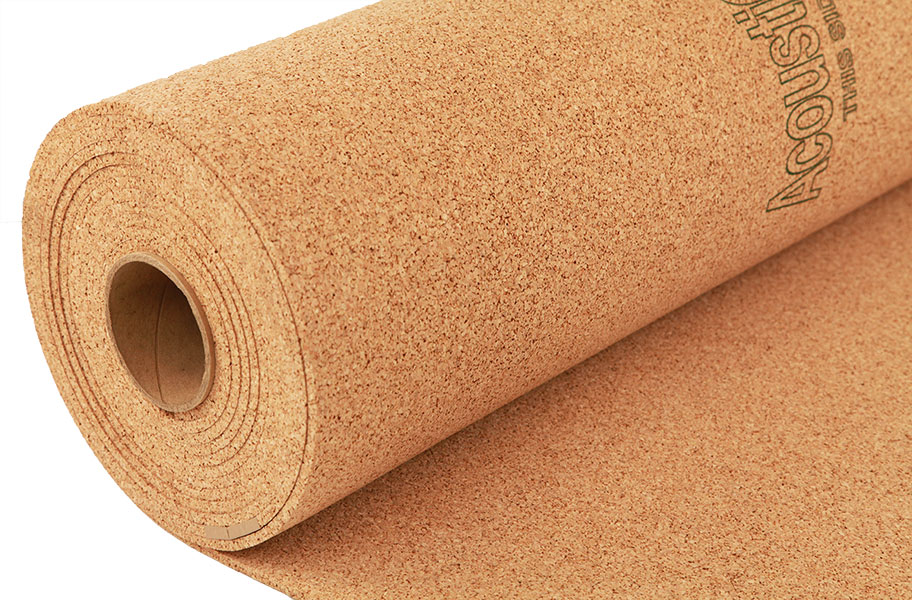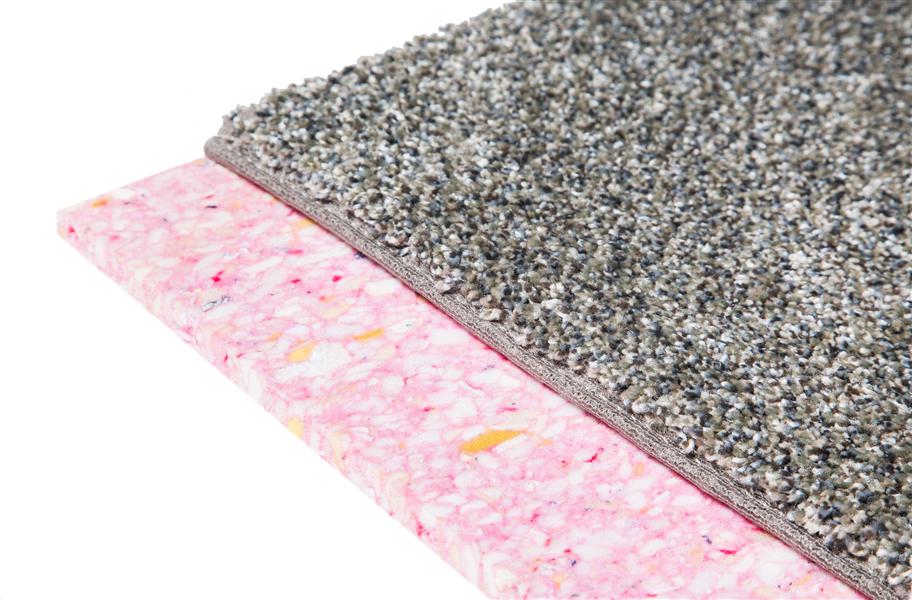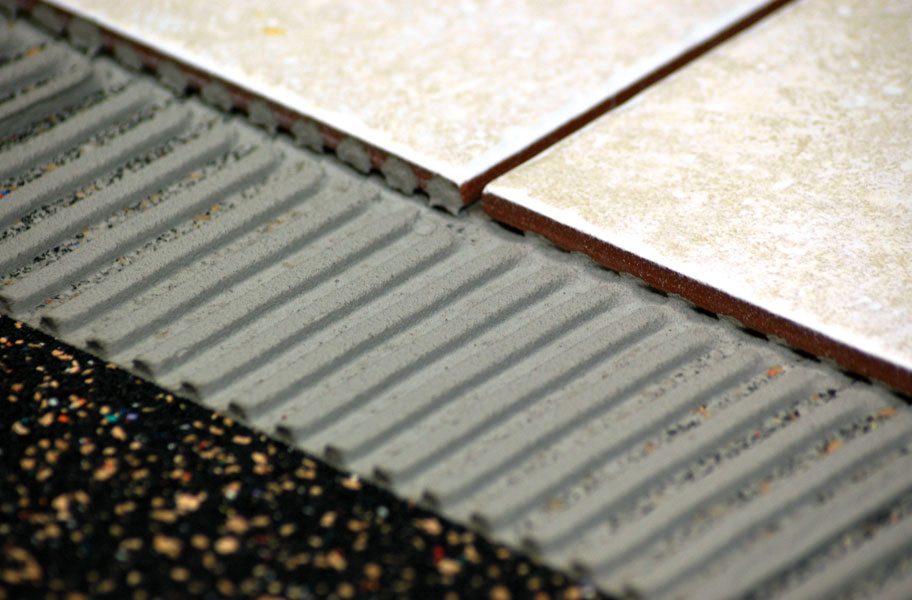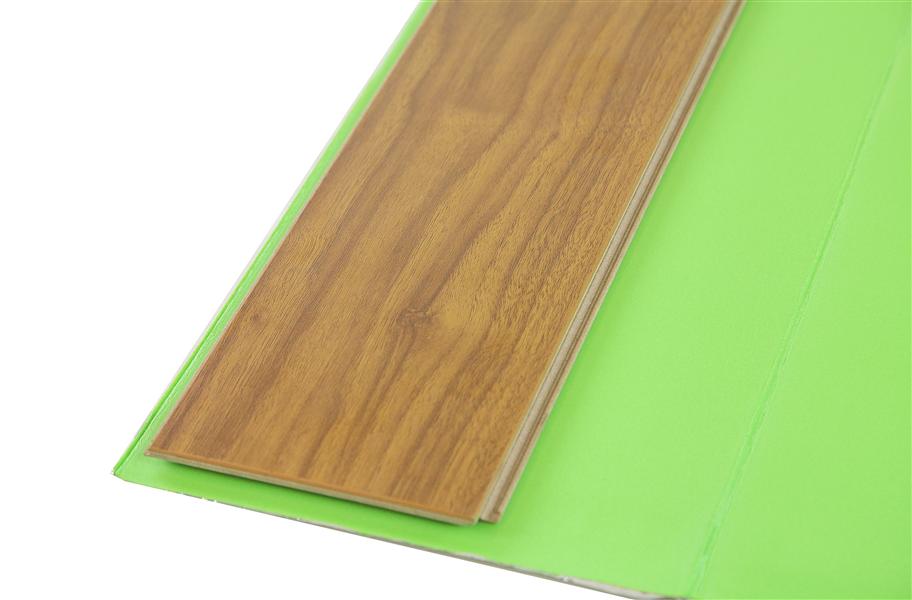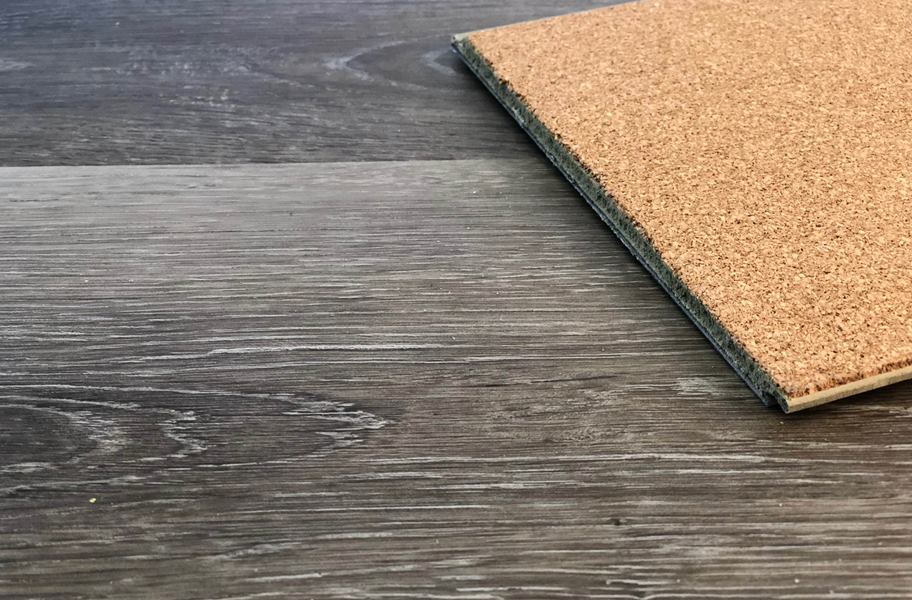
Underlayment Buying Guide: Your Questions, Answered
Underlayment Buying Guide: Your Questions, Answered
Underlayment can be one of the most confusing subjects when it comes to flooring. Learn everything you need to know about underlayment to get the most out of your floor.
If you’re new to the flooring world, you may not even have any idea what underlayment is. Someone probably told you that you needed it, and you went to look it up only to end up totally confused.
After all, there’s a lot of terminology to consider. We’re going to keep it easy, though.
Today, we’re going to answer all your questions including when/if you need underlayment, which types are best for your specific floor, and how much it will cost you.
What is Underlayment?
Underlayment is the layer between your subfloor and your new floor. Yup, it’s really that simple. Underlayment is usually made out of rubber, cork, rubber cork, felt or foam.
Unless your flooring came with an attached underlayment, you probably need a separate underlayment. Underlayment adds warmth and softness, and more importantly, increases the longevity of your new floor. Let’s take a moment and talk more about the benefits of underlayment.
Why do I need Underlayment?
Underlayment isn’t just something we tell you to throw down under your carpet or laminate. It has several purposes:
- Provides support for your flooring– Adding underlayment provides more stability.
- Minimizes the hollow sound caused by foot traffic– Underlayment muffles sounds caused by footsteps.
- Resists moisture– For areas prone to water, this is a big feature that helps to protect your flooring.
- Helps smooth subfloor imperfections– Underlayment ensures your floor lays correctly over your subfloors.
- Reduces transmission of impact sounds– Underlayment provides an extra sound barrier between levels of homes.
- Adds softness to your flooring– If you’re buying carpet, you’re looking for soft. Underlayment adds some squish to your step.
- Increases the longevity of your floor– By supporting your floor and protecting it against friction, underlayment will help keep your floors beautiful for years to come.
The flooring underlayment operates as a protective barrier between your floor and subfloor. Floating floors are especially prone to expansion and contraction as the temperature changes. Underlayment provides a barrier from the friction of movement, keeping your floor totally together during shifting.
Where to Install Underlayment
Underlayment is often the layer below your flooring and can be installed anywhere in your home. Unless your flooring comes with an attached underlayment, assume that you will need one.
In addition to an underlayment, you will often install a vapor barrier in basements, kitchens, and bathrooms. These help protect your new floor from moisture. Wherever you’re installing flooring, expect to need an underlayment or barrier.
How Thick Should My Underlayment Be?
The thickness of underlayment seems to be the question that most customers struggle with. That’s because with underlayment the thickness isn’t the most important consideration. Other factors like type, sound ratings, and density matter just as much, if not more than the thickness.
With that being said, most underlayments are 2-3mm thick, but are sometimes thicker for carpet or to smooth out an uneven subfloor.
It’s often advertised that 6mm underlayment offers double the sound absorption as 3mm underlayment. I’m going to skip the science and let you know that’s not true. Plus, sound absorption is altered by other factors, like material and density, and not just thickness.
Keep in mind, it’s a good idea to check with your manufacturer to see what they recommend. Some thinner products benefit from a thinner underlayment like felt.
Types of Underlayment
Foam
Foam is known as the most basic variety of underlayment. Although it comes at such a low price, foam underlayment still offers plenty of sound reduction. You’ll also find you have plenty of options with foam underlayment from basic foam to 2-in-1 underlayments that have a built-in vapor barrier.
It’s also one of the most versatile underlayments and can be used under a variety of flooring types including laminate, some vinyls, and wood. If purchasing carpet, a foam “carpet pad” works best for carpet rolls.
Foam underlayment is super easy to install – in fact, some options even come with an adhesive strip, making it as easy as sticking on a post-it note!
Best Selling Foam Underlayment
Rubber
Rubber is one of the best choices for underlayment because it is super versatile. It protects your floor from mold and mildew and protects your ears from hollow sounding floors. In fact, it is one of the most sound absorbing and insulating underlayments out there.
Rubber underlayment is most commonly used under wood, tile or carpet, but cannot be used under vinyl due to staining.
Rubber is an excellent choice over wood and concrete subfloors and is super easy to install underneath just about any floor. Since it’s often made from recycled rubber products, it’s eco-friendly, too!
Best Selling Rubber Underlayment
Cork
Cork underlayment tends to be a favorite among apartment and condo owners. There’s a reason for that! Cork absorbs sound better than most underlayments. It’s great at adding insulation to your home as well.
Cork is also an eco-friendly choice in underlayment. Plus, the natural antimicrobial nature of cork prevents the growth of bacteria, mold, and mildew as well. That makes cork a great choice for allergy sufferers.
A warning on cork – although you can install it underneath just about any floor, it is not the best choice for all environments. Water can damage cork flooring, so for basements, bathrooms and other flood-prone areas, you might want to go with rubber instead, or a cork with a vapor barrier.
Best Selling Cork Underlayment
Rubber Cork
The best of both worlds! In a shocking turn of events, rubber cork underlayment is underlayment made of both rubber and cork. I know, I know. Try to contain your surprise.
Rubber cork underlay is an expert at preventing cracks in your tile from your house settling and the natural movement over time. You can think of this underlayment as an invisible bodyguard that keeps your floor looking good even though it’s out of sight.
Rubber Cork can stain vinyl, but is great under other wood and tile flooring. Like cork it is mold and mildew resistant, but we do recommend installing a vapor barrier with the underlayment.
Best Selling Rubber Cork Underlayment
Felt
Felt underlayment is usually made from recycled fibers and is often more dense than foam. The density is what makes felt a great sound absorber. Not only is felt great at absorbing sound, it’s also great at insulating your home and cushioning your step. Some say better than other underlayments!
Since felt fibers are made from recycled materials, it’s also an environmentally friendly underlayment choice. Some felt underlayments come with a vapor barrier built in for extra durability. Felt underlayment can be used under a variety of flooring including hardwood, laminate, vinyl, and more.
Best Selling Felt Underlayment
What Underlayment is Best for My Floor?
This is the most common question that is asked about underlayment. We’re going to make this easy-peasy with a handy chart. However, if you’d like to know more, keep reading. We’ll look at each flooring underlayment in-depth below.
What Underlayment is Best for Laminate?
Foam is a favorite for laminate flooring and it’s what we would recommend the most. You’re in luck! Foam has the most options when it comes to underlayment and offers plenty of sound reduction.
If installing laminate flooring in any moisture prone area like basements, bathrooms, or kitchens, it’s recommended you buy a foam underlayment that has an included vapor barrier.
On the other hand, if your prime concern is sound transmission (such as between apartments or condos), then another great recommendation would be cork underlayment, which can offer a little more sound absorption.
What Underlayment is Best for Vinyl?
The answer to this question can be a bit tricky. The first step vinyl buyers should take is looking at manufacturer instructions and warranties. Some warranties will be voided with the use of certain underlayments.
If you’re able to purchase an underlayment, we recommend cork. With cork, you don’t have to worry about staining or damaging the vinyl. If underlayment is not recommended, you’ll probably still need a vapor barrier underneath.
The good news is a ton of vinyl flooring comes with an attached cork underlayment, so this may not even be a concern for you! Waterproof vinyl flooring like TritonCORE offers an attached underlayment, so you’ll save time and money.
Is Underlayment Safe for Vinyl?
Rubber and rubber cork underlayment are not safe for vinyl due to the possibility of the rubber staining. Cork, foam, and felt are usually safe for vinyl unless the manufacturer says otherwise.
What Underlayment is Best for Carpet?
For carpet, you will almost always use a foam or rubber carpet pad. These pads come in many different thickness options ranging in properties and pricing. Thicker pads will (typically) make your floor softer and more comfortable to walk on. We suggest using a foam carpet pad for broadloom carpet, and rubber for carpet tiles.
Make sure to pay attention to the properties of the carpet pad you’re looking at, not just the price and thickness. While you can find some thicker options at lower price points, they make not do all the things you want them to do (like absorb sound), or at least they might not do them very well.
Make sure to check out those specs! The Carpet Cushion Council (yes, that’s a thing) recommends a minimum of ¼” of padding under residential carpet, though most people buy a ½” underlayment.
What Underlayment is Best for Tile?
For tile flooring where a thinset is used, the best solution is a rubber-cork underlay. You can also install ceramic tiles directly over plywood or a cement board. Rubber cork underlay is designed for crack suppression.
What Underlayment is Best for Wood?
When installing hardwood or engineered wood flooring, the best underlay options are cork and foam.
However, foam does have more give than cork so, while it is the more popular option, we recommend cork. Cork has less give, making it less likely to flex underneath your planks. There are some extra dense grades of foam that can work under wood floors, but they are usually not as durable as cork.
| Related Content >> What is a Moisture Barrier? |
How to Install Underlayment
Installing underlayment is a lot easier than most people think. In fact, I can outline the process in a few simple steps:
- Start by rolling out the underlayment one row at a time, perpendicular to the direction the flooring will be laid.
- Tape or adhere rows at the connecting seams. Some underlayments come with an adhesive strip.
- Don’t overlap underlayment unless the manufacturer recommends it.
That’s it! With a few tools and a little labor, your underlayment is ready to go. Of course, it’s always good to check with the manufacturer to see if your product has more specific directions. Need some visualization? Have a look:
What is the Price of Underlayment?
The average price by material from cheapest to most expensive generally goes foam, rubber, then cork. However, there can be some fluctuations based on features the underlayment has (e.g., a built-in moisture barrier), thickness, and the way it is constructed (rolled underlayment is usually less expensive than sheet underlayment).
| Underlayment Type | Lowest | Average | Highest |
| Foam | $0.30 /sqft | $0.56 /sqft | $0.82 /sqft |
| Rubber | $0.30 /sqft |
$0.85 /sqft |
$1.70 /sqft |
| Cork | $0.39 /sqft | $0.83 /sqft | $1.27 /sqft |
| Rubber-Cork | $0.31 /sqft | $1.43 /sqft | $2.55 /sqft |
| Felt | $0.38 /sqft | $0.38 /sqft | $0.38 /sqft |
| Carpet Pad | $72.99 | $80.49 | $87.99 |
What Kind of Subfloor Do You Have?
It’s not just about what you’re putting on top! Not all subfloors are created equal, and not all underlays work with every subfloor. Some are a little needier and have more demands than others.
Concrete at Ground / Sub-Ground Levels
If you are installing over concrete at levels where moisture can be present, you’ll need a moisture barrier to ensure your water-sensitive flooring doesn’t absorb the moisture, expand, and buckle upwards.
Some cork underlayments have vapor barriers built in and, of course, a plastic or polyvinyl underlay would also work in this situation. You can also be on the lookout for roll-on moisture barriers that work as well.
Concrete / Wood Above Ground Level
This is where you’ve got the most options! In fact, almost any underlay will work at this level.
If you’re installing on wood at above ground levels where moisture is not a threat, then a vapor barrier might not be needed. Of course, I’m of the attitude “better safe than sorry,” and would still recommend one anyway.
FAQ
What is Sound Control?

When we talk about sound control, we are talking about limiting the amount of sound transference from one room to another. Underlayment helps stop the transference of sound between rooms, like from an upstairs room to one down below.
What are IIC Ratings?


IIC is a measure of the reduction of impact noise. Impact noise is noise like footsteps. The minimum IIC rating for most building codes and HOA requirements is 50 and above.
What are STC Ratings

STC stands for sound transmission class. It’s a measure of the reduction of sound we hear that falls between 125 Hz and 4,000 Hz. The minimum requirement for an STC rating is 50.
Keep in mind that buying an underlayment twice as thick, doesn’t necessarily translate to a higher rating. For example, a 2mm underlayment may have a rating of 50; a 4mm underlayment may have a rating of 55.
What is a Moisture / Vapor Barrier?
Moisture barriers and vapor barriers are the same product. The terminology is often used interchangeably with one another, which creates confusion among readers. Rest assured though, a vapor barrier is also a moisture barrier.
Moving on, vapor barriers prevent moisture from passing through the barrier from the subfloor and protects your floor above. It’s usually installed in areas that are more prone to moisture.
Do I Need Underlayment if There’s Attached Underlayment to My Product?
There are a ton of vinyl flooring options that often come with an attached underlayment. If your flooring comes with an attached underlayment, it’s best to not have additional underlayment. In fact, in some case, doubling up on underlayment can actually damage your floor.
You may, however, add a vapor barrier to your installation project.
Does Underlayment have Crack Suppression?
Rubber, cork, and rubber cork underlayment all offer crack suppression. Rubber cork is usually the prefered choice for this issue.
Which Underlayment do I Buy?
If, by now, you’re still a little bamboozled by this whole underlayment thing, feel free to contact one of our flooring specialists, and we’ll help you out.
Conclusion
As you can see, you have plenty of options when it comes to underlayment. Before making any decision, we recommend that you identify exactly which features you need out of your underlay and how the underlay will be used. And of course, check manufacturers’ recommendations.
